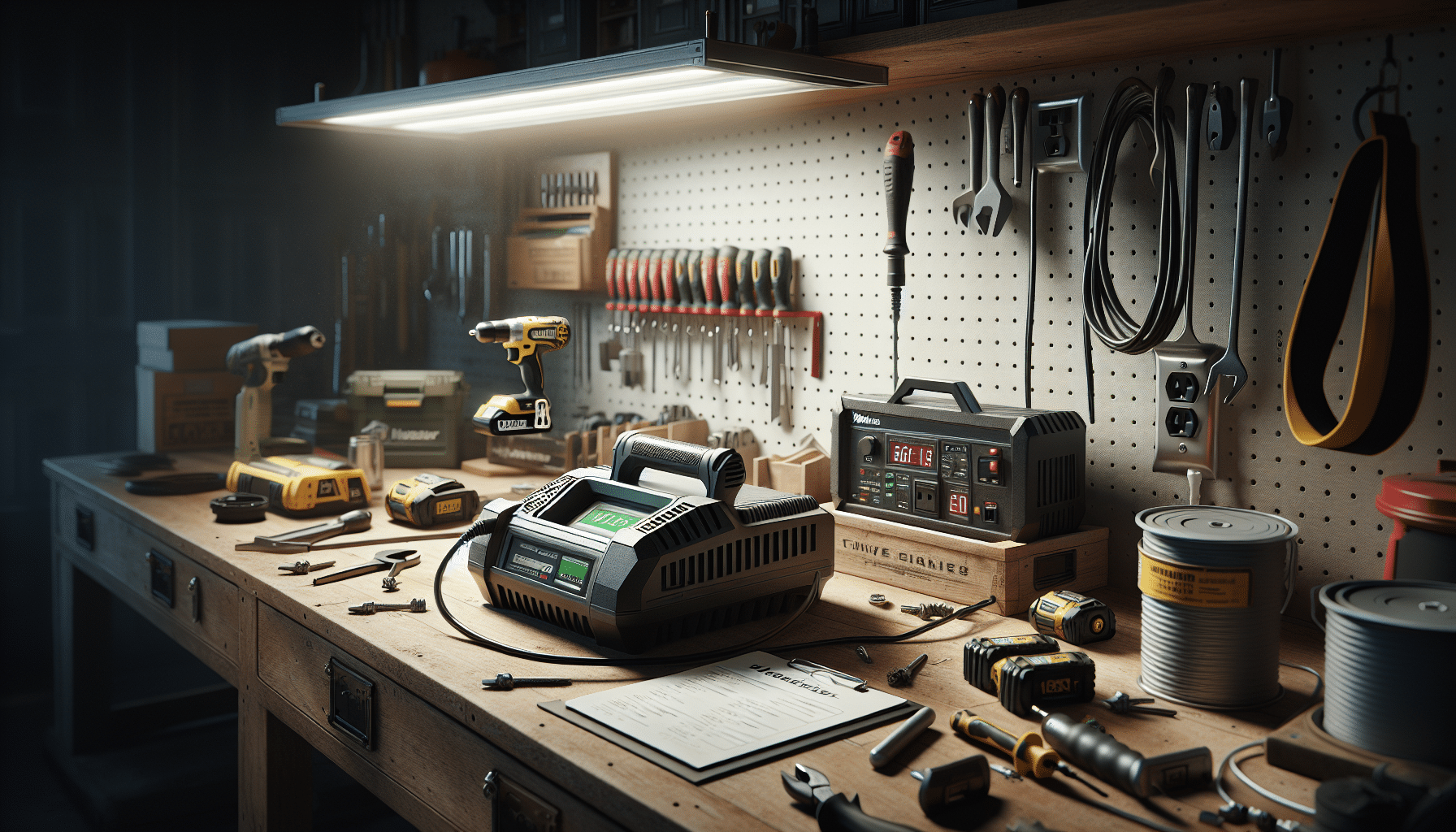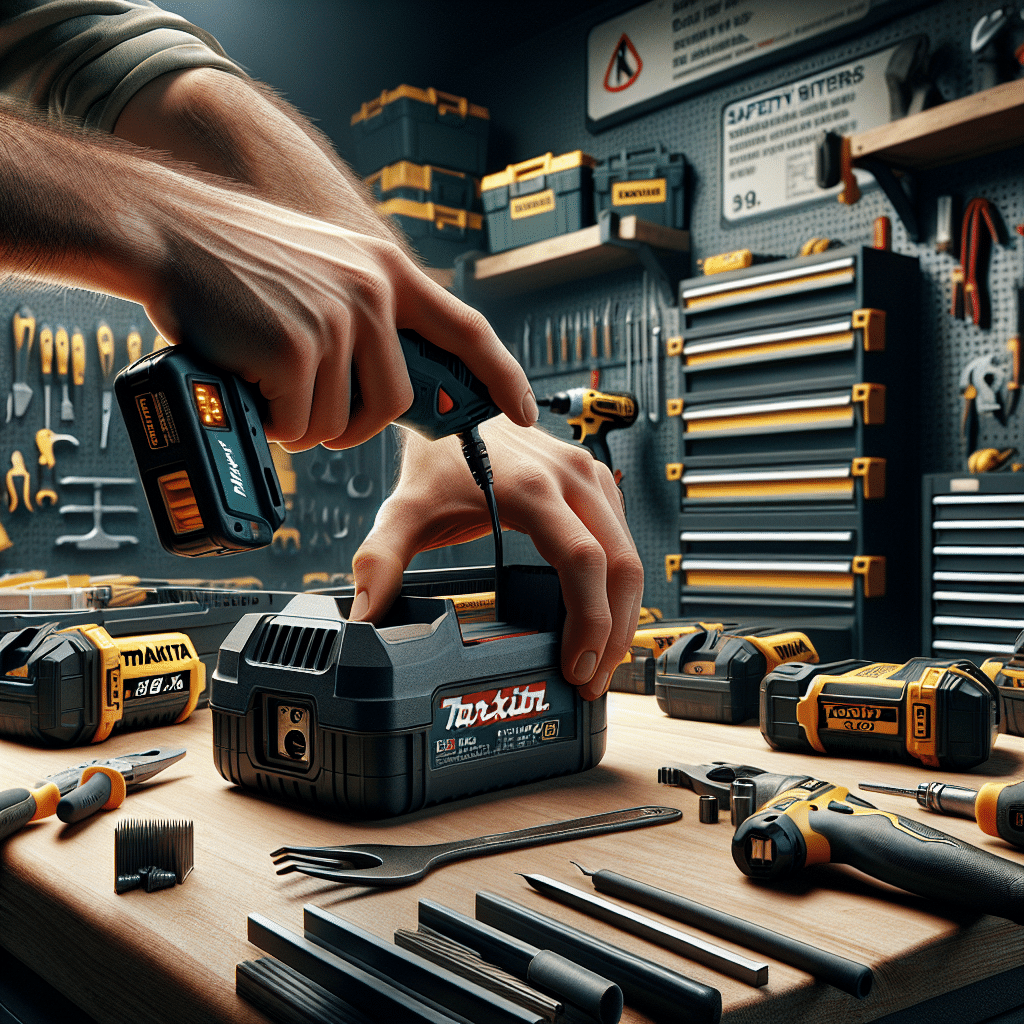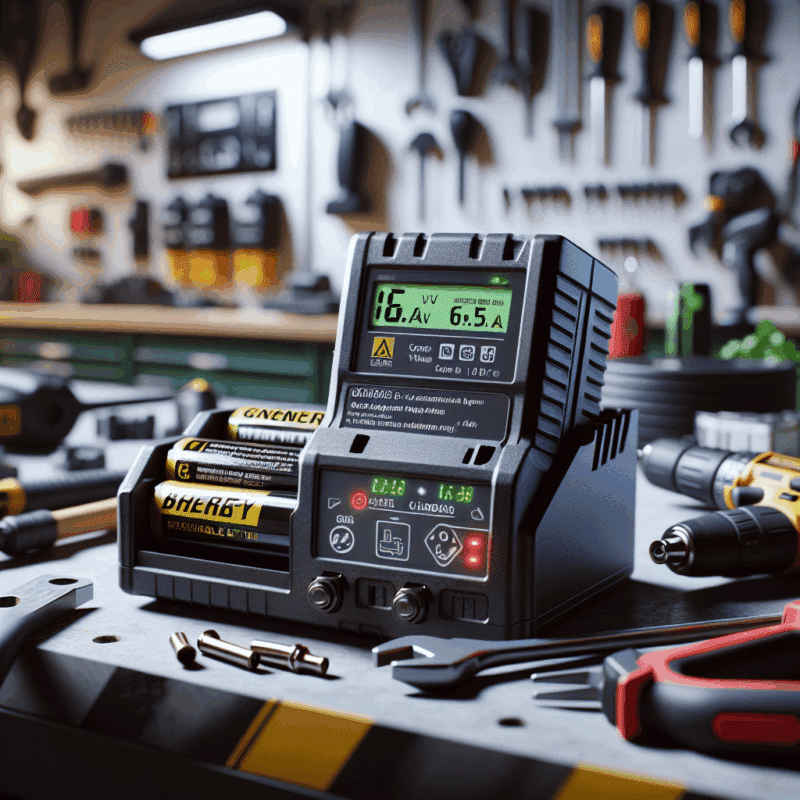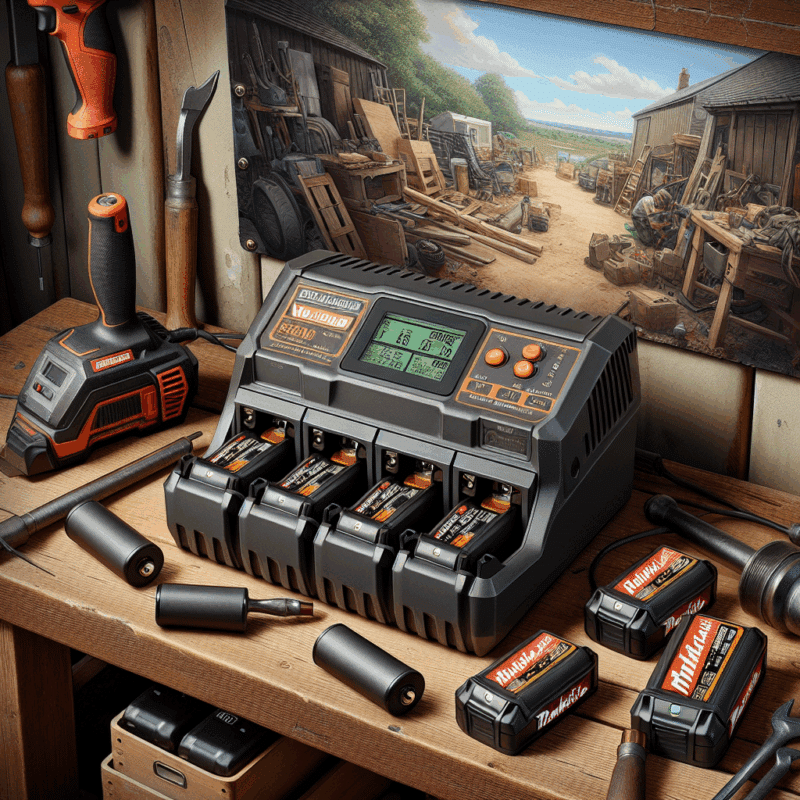Switching to VoltGuard: Expert Compatibility & Transition Tips
In This Article
- VoltGuard compatibility enhances charging speed and battery lifespan.
- Supports 18V and 40V Makita lithium-ion platforms like LXT and XGT.
- Features include surge protection, heat regulation, and app connectivity.
- Installation is straightforward—ideal for workshops and mobile setups.
- Meets EU compliance regulations for electrical safety and efficiency.
- Offers memory-based smart charging based on user patterns.
- Real-world reviews confirm improvements in tool uptime and stability.
Why Consider a VoltGuard Charger?
Meet the Next Generation of Fast Charging
VoltGuard compatibility is rapidly becoming the benchmark for professional-grade tool charging. As more demanding tasks place greater strain on battery reliability, technicians and contractors are searching for smarter charging alternatives. VoltGuard chargers use adaptive voltage regulation, heat suppression, and smart current management—features engineered to accelerate charging without compromising battery life.
Beyond speed, VoltGuard technology prioritises stability. By integrating smart-chip compatibility with modern Makita battery systems, VoltGuard chargers ensure every power cycle is optimised for longevity. Professionals who switch report up to 30% faster full charges and up to 25% improvement in battery health over time. These statistics demonstrate tangible benefits for those ready to embrace VoltGuard compatibility across their workshops.

VoltGuard Compatibility Overview
Supported Makita Batteries and Tool Platforms
Ensuring VoltGuard compatibility starts with understanding which tools and batteries are supported. These chargers are purpose-built for seamless operation with 18V and 40V Max Makita lithium-ion battery packs, particularly within the LXT and XGT platforms. Whether you’re using impact drivers, reciprocating saws, or rotary hammers in these series, VoltGuard’s smart recognition system instantly syncs with the battery’s internal ID profile to deliver precision charging.
What makes VoltGuard exceptionally versatile is its future-facing architecture. It’s already factory-configured to recognise upcoming Makita platforms via firmware updates—making it an intelligent long-term investment. For businesses running mixed batteries or transitioning from older platforms, this backward-compatible design ensures fewer disruptions and lower total replacement costs. VoltGuard compatibility extends to dual-slot charging setups as well, enabling parallel cell recharging without thermal build-up.
“Switching to VoltGuard supercharged our productivity—no more mid-day recharges.” – Julian R., Construction Manager
Charging Safety and EU Compliance
Regulatory Assurance You Can Trust
Safety and compliance are critical in any professional-grade charging solution. VoltGuard chargers meet stringent EU directives concerning electrical efficiency and user safety. Certified under CE and RoHS standards, these chargers exhibit minimal electromagnetic interference while using fire-retardant materials in their casing and wiring. Each unit features triple-layered surge protection, preventing voltage spikes from damaging sensitive batteries.
Moreover, VoltGuard compatibility includes smart thermal sensors actively monitoring internal temperatures. If overheating is detected, the system dynamically adjusts current output or terminates the charge to protect both the charger and the battery. For sectors where health and safety regulations are routinely audited, such as construction, engineering, or logistics, VoltGuard compliance documentation is fully accessible and verifiable. This peace of mind makes it a go-to solution for regulated environments.
Transitioning Tips for the Workshop
What to Know Before Replacing Your Old Charger
Transitioning to a VoltGuard-compatible charger involves more than plugging in a new device—it requires a structured shift in operational workflow. Begin by auditing your current collection of Makita batteries. Ensure each unit aligns with LXT or XGT platform specifications, which are the primary systems supported for VoltGuard compatibility.
Once compatibility is verified, uninstall any legacy chargers that don’t meet smart-charging standards. Consolidate your charging zones to make room for your VoltGuard devices, ideally in areas with sufficient ventilation. Many professionals also label batteries post-upgrade to distinguish which ones have benefited from VoltGuard optimisation. Finally, update staff procedures to monitor charge cycles, which can now be tracked via VoltGuard’s LED display and optional wireless app functionality.
Installation Procedure: Step-by-Step
From Unboxing to Workspace Setup
Installing your VoltGuard charger begins with a careful unboxing process. Inside the package, you’ll find the charger unit, power cable, installation screws (for wall-mount compatibility), instruction manual, and optional mounting brackets depending on the model. Position the charger in a well-ventilated, dust-free area near your workstation or tool bench.
After plugging in the unit to a grounded 230V socket, allow the system to perform a baseline self-diagnostic. During this sequence, the internal processor verifies voltage input, fan activity, and LED display synchronisation. Once the status indicator turns green, the charger is ready to accept batteries. Insert a Makita battery—VoltGuard compatibility ensures instantaneous recognition and begins a dynamic charge sequence tailored to the battery’s chemical profile. The LED matrix will indicate charge percentage in real time while alerting users to any anomalies detected during the cycle.
VoltGuard vs Standard Makita Chargers
What Makes the Upgrade Worthwhile
The key distinction between VoltGuard and standard Makita chargers lies in intelligent charging. While baseline Makita chargers offer safety and durability, they lack the active feedback loop that defines VoltGuard compatibility. Real-time temperature monitoring, surge suppression, and cell balancing across unevenly used batteries are all areas where VoltGuard excels.
Furthermore, VoltGuard models incorporate memory-based learning. These devices track your usage frequency and adapt future charges accordingly to minimise cell fatigue. While a traditional charger treats every battery identically, VoltGuard recognises depreciation profiles and modulates voltage output as needed. This capability directly translates into extended battery life, fewer service interruptions, and reduced long-term operating expenditure. For professionals working long shifts with minimal downtime, that trade-off more than justifies the transition.
Common Compatibility Questions Answered
Your Most Searched Queries Explained
Can VoltGuard charge older Makita 14.4V batteries? No—VoltGuard compatibility is specifically geared towards 18V and 40V lithium-ion platforms. Using unsupported batteries may lead to charging errors or damage.
Will VoltGuard damage my batteries with overcharging? Absolutely not. Thanks to its embedded BMS (Battery Management System), VoltGuard shuts itself off once the charge is complete, eliminating risk of overcharge cycles.
Is app connectivity required to use VoltGuard? No. The charger operates fully autonomously, but connecting it to the companion app enhances functionality and reporting.
Do I need to calibrate the charger regularly? VoltGuard chargers perform auto-calibration at startup routines—no manual intervention is required.
Where can I find Makita-approved accessories for VoltGuard? Check this guide: Learn more about Makita-Compatible Charger Upgrades and Safety for a curated list of validated accessories compatible with VoltGuard units.
Real User Experiences & Reviews
What Other Professionals Are Saying
Testimonials collected from across various trades echo the performance advantages of VoltGuard compatibility. Liam R., a joiner from Leeds, shares: “The fast recharge lets me rotate batteries more efficiently. I’ve nearly halved idle time on site.”
Electricians appreciate the reduced heat output. Tatiana H., a project forewoman, states: “Our team has experienced fewer tool shut-offs due to electronic heat triggers. Everything remains stable throughout the day.” These qualitative assessments align with what VoltGuard engineers promised.
Feedback also underlines ease of use. Most users highlight intuitive LED cues and the simple battery swap interface. For detailed field test results and statistics, visit Understanding upgrades and compatibility changes.
Technical Specifications of the VoltGuard 6500
Charging Speed, Voltage Range & Smart Features
The VoltGuard 6500 sits comfortably in the premium range of cordless tool chargers. Its core specifications include a peak charging current of 9.5A, voltage detection for 18V (LXT) and 40V Max (XGT) batteries, and smart temperature-controlled fan regulation.
Additional features include dual-port simultaneous charging, dynamic current throttling for mixed-capacity batteries, real-time diagnostic alerts via LED and app interfaces, and over 1,000-cycle lifecycle testing. The charger also supports NFC pairing with future smart battery enhancements which Makita plans to launch in the upcoming quarter. Learn more in this industry brief: EU product safety updates and compliance tips.
Maintaining Your Charger for Longevity
Storage, Cleaning, and Battery Care Tips
Proper maintenance significantly extends the life of your VoltGuard charger. First, store your device in dry, indoor environments with ambient temperatures between 10°C and 27°C. Avoid stack placements that restrict the airflow required by its vented cooling system.
Dust and debris can accumulate, especially in workshop settings. Use compressed air or antistatic wipes on the intake vents monthly. Avoid using liquid cleaners or solvents, which may degrade casing materials. Also, detach the power supply when the charger is inactive for prolonged durations.
Regarding battery care, avoid inserting cold or overheated batteries. Allow them to reach room temperature before charging. Regularly rotate battery usage to prevent uneven ageing. VoltGuard compatibility will optimise each cell, but starting with good battery hygiene further boosts performance.
Conclusion: The Smart Move for Professionals
Switching to VoltGuard compatibility isn’t merely a hardware upgrade—it’s a commitment to efficiency, safety, and future readiness. These chargers integrate advanced safety protocols with smart learning algorithms, ensuring professional tradespeople can rely on optimal power delivery throughout the workday.
Whether you’re operating in construction, carpentry, plumbing, or site management, VoltGuard solutions streamline your charging workflows and preserve your battery investments. With a growing number of Makita-compatible platforms integrated into the VoltGuard ecosystem, now is the time to reconsider how power management complements your toolkit. For additional setup tips and advanced accessories, explore Read a related article.
Great guide on switching-to-voltguard-compatibility-transition-tips – Community Feedback
Is VoltGuard compatible with all Makita 18V LXT batteries?
Yes, VoltGuard is designed for Makita 18V LXT-compatible batteries, but always check your battery model for specific compatibility.
What should I consider before switching chargers?
Ensure your new charger meets safety certifications, has compatible voltage and amperage ratings, and supports your batteries’ technology.
Does switching to VoltGuard require additional setup?
No special setup is needed—just connect and charge, but review supplied instructions for optimal safety and battery health.



